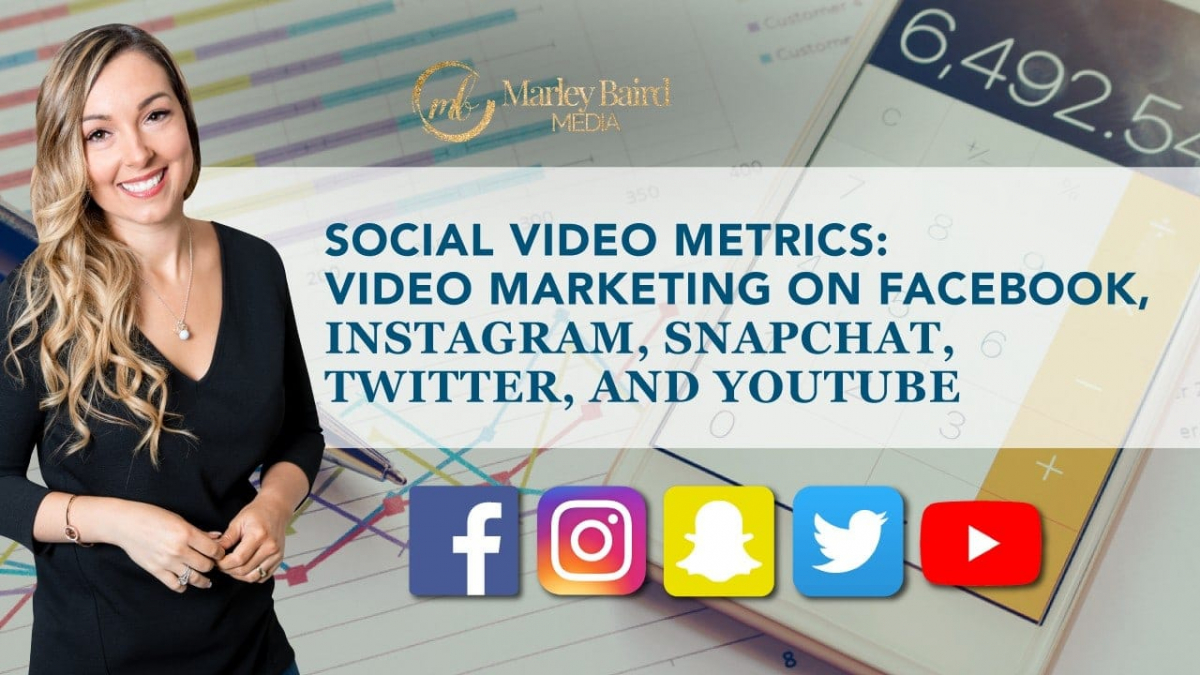Social Video Metrics: Video Marketing On Facebook,
Instagram, Snapchat, Twitter, and YouTube
FREE DOWNLOAD: Social Media Metrics Calculator
BONUS: BRAND NEW WEBINAR TRAINING:
How To Create 60 Days Of Social Media Content And Video Content In 8 Hours
Everyone’s eyes are on video. Taking over all our screens, social media platforms like Facebook and Twitter are betting big on a future that’s powered by video content. Given its importance to social media marketing, determining whether your video marketing efforts are a success is crucial to understand how you’re doing in the digital space but it’s not just a walk in the park.
Measuring video content success can come across as a difficult task. Each platform has its own way of interpreting views, shares and engagement. It may be hard but it’s not impossible.
In this video, I’m going to help you understand social video metrics across Facebook, Twitter, Snapchat and YouTube. I’ll give you the lowdown on how to measure success in each platform and what they mean for you in your business. If you haven’t tracked the numbers or tinkered with the analytics in the past, check out my Social Media Metrics Calculator. By entering your numbers, it automatically calculates the metrics for you. Good for any social media marketer, newbie or pro.
Now, let’s go to each of the platforms.
Facebook. For Facebook, one video view is counted when the user hits the three second mark. It autoplays as you scroll along the feed. The view counts are marked each time any user or even the video owner watches the content. Different metrics such as total minutes viewed can also be seen by the content owner. You can also check how many unique views have been made giving you an estimate of reach. You can also measure the number of 10 second views.
One important metric present through Facebook is average watch time and engagement. Watch time is characterized by how long your audience lasts watching your content. This is your retention rate. At the same time, Facebook provides other metrics of assessing video engagement such as reach, top audience, top location and post engagement.
Instagram. Similar to Facebook, Instagram measures view count when you hit the three second mark. However, it doesn’t include your views from embedded posts, desktop views or loops. Unlike Facebook where metrics are readily available, you have to activate your business profile to review this. Make sure you have a Facebook page set up to be able to do this. Once you complete the setup, you can review more than just views and likes. You can check impressions, reach and post engagements.
Snapchat. For Snapchat, view counts are measured upon opening them. The assumption here is that you’ve already viewed the content given that it’s a very short form. The only downside for Snapchat is that you can’t embed your content natively unless you use third party apps. At the same time, it’s tricky to get the metrics of your snap performance.
At the time I’m filming this, as we know social media changes all the time, the only available metrics natively is views and number of screenshots. If you want more comprehensive data set, you can make use of tools like Snaplytics.
Twitter. Twitter views are counted upon the three second mark. One of the most powerful video metrics available, they have a dedicated dashboard that can generate the data you need. Different metrics of performance are also available. You can measure the usual impressions and reach. What’s interesting about Twitter are media views which measures all the views of your video across embeds, retweets and replies. It’s a measure of how amplified your tweet videos are. You can also assess completion rate which tells you what percentage of your audience completed your video. It’s a great way to tell how your audience interacted and engaged with your content.
YouTube. And my favorite, YouTube. YouTube views on the other hand are counted on the 10 second mark. However, it gets a little tricky. YouTube has an algorithm that checks whether the view is real before adding it to the count. This is done to prevent view counts from being artificially inflated if they weren’t really being seen by unique people.
Of all the platforms, YouTube has the most metrics available. You have your usual watch time, average view duration which is your view through rate, likes, dislikes, comments, shares. You can also check out your subscriber count and growth over time.
One of the best measures of success here are audience retention, traffic sources and playback locations. Audience retention helps you to understand the percentage of your users who stay throughout the content. Traffic sources tells you how users are referred to your YouTube channel. Playback on the other hand outlines where they consume it.
Video marketing is here to stay and it will become more relevant as technology advances and internet speeds go even faster.
As you’ve read, each social media platform can have different interpretations and metrics but you can’t always rely on them. You can make your own metrics by combining two or more of them to get a better sense of where you’re headed.
Always make sure that the metrics you’re tracking are relevant to achieving your goals.












